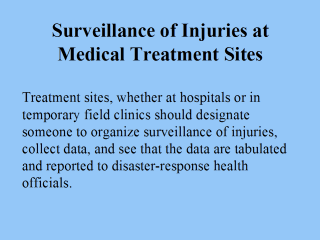 |
In addition to
collecting adequate information on the location and severity of the injury
and disposition of each patient, the surveillance team should attempt to
record, for each patient, a permanent point of contact outside the disaster
impact area so that epidemiologists conducting follow-up studies and/or
surveillance efforts can find them, even if they are not able to return to
their previous addresses because of earthquake damage. Depending on the
urgency of the situation, some information can be collected on the spot
about how an injury was sustained. Good basic data collected at the outset
will both provide decision makers with accurate data on injuries and form
the basis for lessons applicable to the next earthquake. |
